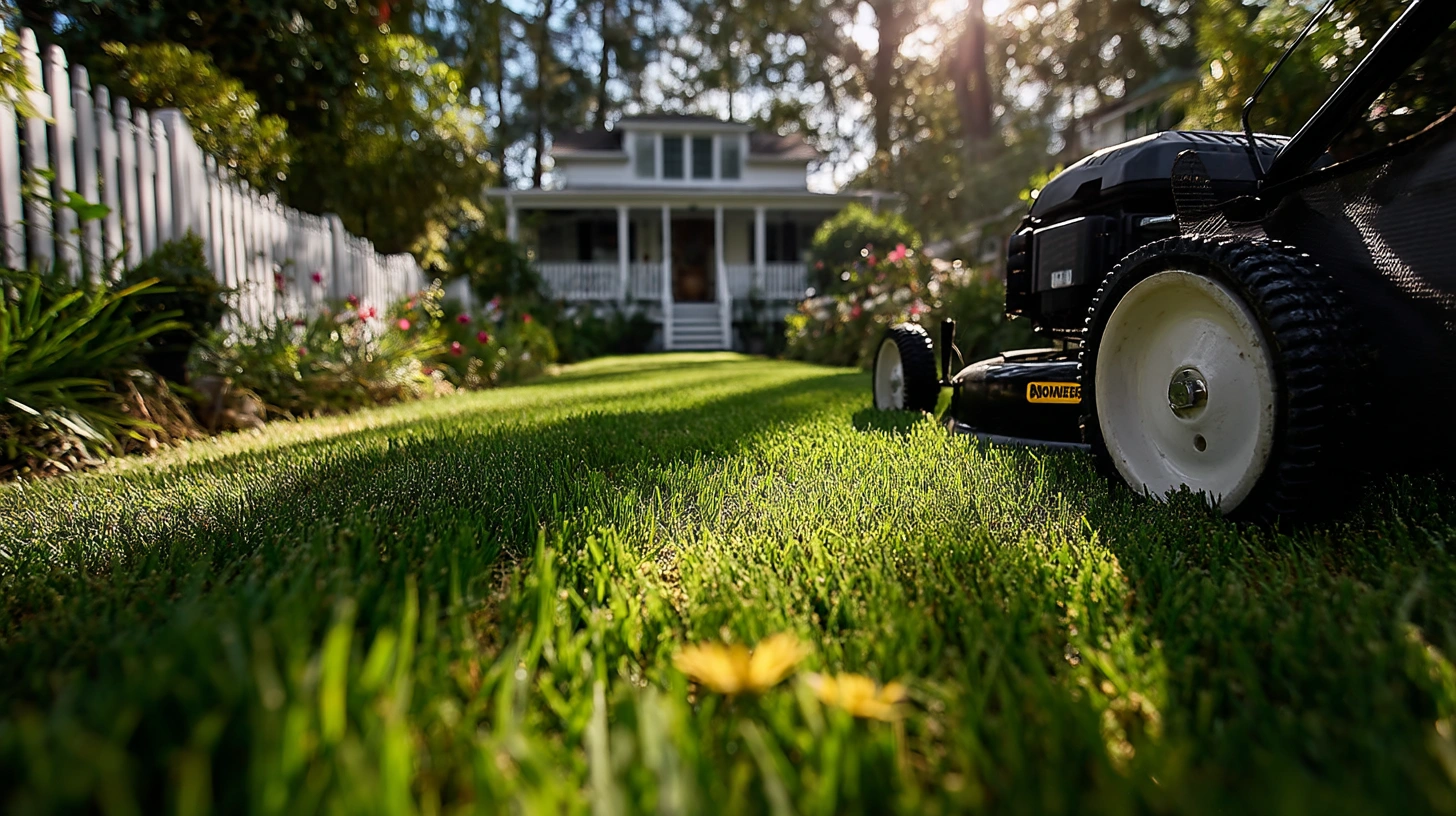How to Fix Uneven Mow Lines on Bermuda Grass Lawns

Learn why random lines appear on your Bermuda grass lawn after mowing and how to troubleshoot scalping, thatch buildup, blade issues, and uneven terrain.
How to Fix Uneven Mow Lines on Bermuda Grass Lawns
Introduction
If you've noticed random, wavy lines in your Bermuda grass even after mowing with a new, well-maintained riding mower, you're not alone. Many homeowners in the Southern US and other warm-season regions face this frustrating issue. You dial in the cutting height, rotate your patterns, and keep tires inflated, yet those unsightly stripes keep popping up.
In this guide, we'll dive into the science and practical fixes behind uneven mowing on Bermuda grass. We'll look at key factors like scalping, thatch buildup, blade condition, and subtle terrain variations. By the end, you'll understand how to diagnose the root causes and apply straightforward solutions--from dethatching and leveling to blade sharpening and mower setup tweaks. Let's get your lawn smooth and even, just like you've envisioned.
Problem Identification
Uneven mowing lines on Bermuda grass aren't always tied to a defective deck or incorrect tire pressure. Even with proper deck leveling and varied mowing directions, you can still end up with erratic stripe patterns or shallow depressions. Identifying the underlying causes is the first step toward a consistently clean cut.
Key symptoms:
Random shallow grooves or raised ridges in the turf
Patches where grass appears scalped or nicked
Lines that persist regardless of mowing direction
Ready to transform your lawn?
Get personalized AI guidance for the perfect lawn. Download Grassmaster Gus now!
Causes of Uneven Mowing on Bermuda Grass
Scalping
Scalping happens when the mower blade dips below your desired height, cutting into stolons or soil. Bermuda grass grows in a dense mat, so even minor deck bounce on small bumps can leave patchy scalped zones. It's most common when you set a low mowing height or tackle uneven terrain.
More on scalping: Clemson Extension
Thatch Accumulation
A thatch layer over 1/2 inch thick acts like a cushion under your deck, leading to inconsistent blade contact. Bermuda's rapid growth and organic buildup mean you'll need to dethatch every year or two to avoid uneven cuts.
Learn dethatching methods: HappySprout | Better Lawn Care
Blade Sharpness and Mower Vibrations
Dull or unbalanced blades tear rather than slice, creating ragged edges and uneven heights. Accumulated debris on the deck can throw blades off balance, introducing vibrations that translate into irregular cuts across your lawn.
Tips for blade care: GardenBotany
Lawn Topography
Even a slight dip or hump becomes exaggerated when you're cutting Bermuda grass low (1-2 inches). Riding mowers don't adapt to small contour changes as well as push mowers, so uneven ground shows up as uneven grass.
Growth Grain and Mowing Direction
Bermuda grass develops a directional grain much like a haircut. Alternating mowing patterns helps, but it won't fully correct uneven lines if scalping, thatch, or blade issues are in play.
Further reading: Bermuda Grass Bible
Environmental Stress
Under drought, poor nutrition, or pest pressure, Bermuda grass grows irregularly, amplifying visible inconsistencies after mowing. A healthy, well-fed turf tolerates frequent cuts and hides minor irregularities better.
Stress management tips: The Grounds Guys
Solutions and Treatments
Maintain Correct Mowing Height
Aim for 1.0-2.0 inches for Bermuda grass. Never remove more than one-third of the blade length in a single mowing.
Sharpen and Balance Blades
Check blade sharpness before each mowing season and balance them when you sharpen. Remove grass buildup under the deck regularly.
Dethatch Regularly
Inspect your thatch thickness each spring. Use a dethatching rake or power dethatcher if the layer exceeds 1/2 inch.
Level Minor Bumps and Depressions
Topdress low spots with a sand-soil blend to smooth subtle undulations that cause scalping.
Alternate Mowing Patterns
Rotate your mowing direction weekly. This helps break up the grain and prevents permanent tire tracks.
Optimize Mower Setup
Install anti-scalp wheels on your deck if available. Confirm that deck hangers and springs are adjusted per manufacturer specs.
Aerate Annually
Core aeration relieves compaction, improves root health, and minimizes uneven surface settling over time.
Prevention Strategies
Creating a regular maintenance schedule is your best defense against random cut lines. Stick to these seasonal routines:
Spring: Level turf, dethatch, sharpen blades, and aerate.
Summer: Mow weekly or every 5-7 days. Keep blades sharp and check deck cleanliness.
Fall: Overseed bare patches if needed and reduce mowing height gradually.
Winter: Service the mower and replace worn components before the next growing season.
Timing and Application Tips
Best Time to Dethatch
Early spring, just as Bermuda grass breaks dormancy. This gives the turf a full growing season to recover.
Mowing Frequency
During peak growth (late spring through summer), mow every 5-7 days to avoid removing too much leaf in one pass.
Avoid Mowing Under Stress
Hold off if the lawn shows signs of drought or heat stress. Wet grass also leads to clumping and uneven cuts.
Conclusion
Random, uneven mowing lines on Bermuda grass lawns can feel like a mystery, but with the right approach, they're entirely fixable. By understanding the roles of scalping, thatch, blade condition, and terrain, you'll know exactly where to focus your efforts. Keep blades sharp, dethatch regularly, level minor bumps, and rotate mowing patterns to maintain a crisp, professional finish. With these practical steps and consistent care, your Bermuda lawn will stay smooth, healthy, and a source of neighborhood pride.
Now that you've got the playbook, grab your tools and get to work--your best Bermuda lawn is just a few tweaks away.
Transform Your Lawn with AI-Powered Care
Join thousands of homeowners achieving their dream lawn with personalized guidance from Grassmaster Gus.
- AI-powered lawn analysis
- Personalized care schedules
- Expert advice 24/7
- Track lawn progress
